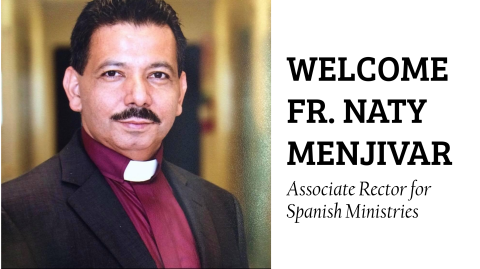The parables of Luke 15 are remarkable passages filled with deep cultural significance and pregnant with theological meaning. These well-loved stories (The Good Shepherd, The Lost Coin, and The Father Who Had Two Sons [historically known as “The Prodigal Son”]) show a transition from the world of the agrarian society of Jesus’ day to a powerful view of the world of relationships between fathers and sons in first century Palestine. Throughout this chapter, the reader is able to see the radical brilliance of Jesus, the Storyteller, who often “began with the earthly world of animals, coins and fish and then turned to a discussion of people.”1 In the next few weeks, I will write a number of short articles to help us best understand these parables. I hope you enjoy reading them as much as I have enjoyed researching and writing them.
To understand these parables, you must add the first three verses of the chapter before each story. This introduction gives all the context necessary for each parable. The verses read, “Now all the tax-collectors and sinners were coming near to listen to him. And the Pharisees and the scribes were grumbling and saying, ‘This fellow welcomes sinners and eats with them.’ So, he told them this parable…” These verses frame the parables in verses 4-32 within a polemical context: The Pharisees and the scribes accuse Jesus of eating with sinners. It is after this charge is made that Jesus begins to tell these parables. These parables are then a defense for Jesus’ table fellowship practices. For Luke, Jesus saw his vocation as a rescue mission to find the lost. The question, “Why does this man eat with Tax Collectors and sinners?” could be answered by the last verse of each parable: “[Because] there will be more joy in heaven over one sinner who repents than over ninety-nine righteous people who need no repentance” (15:7.) “[Because] there is joy in the presence of the angels of God over one sinner who repents” (15:10.) “[Because there is rejoicing in heaven when one] was dead and has come to life; was lost and has been found” (15:32.)
These revolutionary parables are unique to Jesus and only appear in the Gospel of Luke. Through them, our Messiah shows his brilliance as a teacher and his love for sinners. The parables present an image of God as deeply concerned for people deemed by most first-century Jews as unclean and undesirable. As such, the powerful message of these parables is relevant for us in the 21st century as well. We live in a broken world where many feel as spiritually isolated from God and from their community as the “undesirables” of Palestine. We oscillate between the prodigal son and his brother, and between the sheep in need of finding and the sheep who resists the help of the shepherd and must be carried on the shepherd’s shoulders. We are the lost coin completely unable to come out of the darkness of being lost into the light of those who are found by Jesus. We oscillate between the sinner at the feet of Jesus and the morally-superior grumblers who question the right of others to worship among us. We need to hear these parables anew today.
This brings us to the context for Luke 15. Apparently, the setting for the conflict is a meal to which Jesus (as the guest Rabbi) is allowed to invite guests. The Pharisees and scribes become offended that Jesus welcomes and eats with the unclean newcomers. They say, “This fellow welcomes sinners and eats with them” (v. 3.) Tax collectors are seen as thieves and traitors. Other “sinners” include prostitutes, shepherds, lepers, beggars, the crippled, the lame, and the blind. These parables are not “the presentation of the gospel so much as the defense and vindication of the gospel.”2 The unspoken implication is that Jesus lacks the moral authority to teach as a Rabbi because he has defiled himself by his association with the impure. Jesus will challenge this understanding by making a connection between repentance and salvation. Repentance is to acknowledge our lostness, whereas ritual cleansing is a pious behavior that can mask our true lostness. “That God’s wisdom will be justified despite Jesus’ unconventional practices suggests that his ‘partying’ does not render him impure. He does not shun the unclean and includes even the most morally impure among those with whom he is willing to associate.”3
I often wonder if the Pharisees make too much of Jesus eating and drinking with sinners. This is an important question because we often unroot their objections from the original context, making them sound capricious and nit-picky. To capture the full significance of their concerns, we must understand that for a Palestinian to invite someone to dinner was a great honor. It was “an offer of peace, trust, brotherhood and forgiveness; in short, sharing a meal meant sharing life.”4 Invitations were not given out lightly. After all, “the guest is assumed in any oriental banquet to be bringing honor to the house in which he is entertained.”5 The prevailing wisdom dictated that the righteousness and holiness of the guest was extended to the host family. Associating with a sinner threatened the status, honor, and spiritual cleanliness of any righteous Jew. “Basic to the rationale behind this behavior was the conviction that the powers of the unclean to defile the clean far outstripped the ability of the clean to sanctify the unholy.”6 According to Luke 15:1-3, Jesus not only eats and drinks with tax collectors and sinners, but he also “welcomes” or “receives” them. There is more at stake here than honor, shame, and social respectability. Eating and drinking with these “undesirables” represented a violation of “religious uprightness, proper covenant behavior, loyalty to the traditions, and hence to the aspirations of Israel.”7 Table fellowship was one of the signs that showed the world your loyalty to God and country.
The attitudes of the critics seem to be supported by the Old Testament, which makes Jesus even more radical. The OT presents special meals to ratify covenants between God and the people (Genesis 26:30-31; Exodus 24:9-11,) for weddings and family celebrations (Genesis 29:22-23,) for military victories (Genesis 14:18,) for extending hospitality to strangers (Genesis 18:1-8,) to celebrate Passover (Exodus 12,) etc. There is no precedent, however, for meals that involve table fellowship between righteous Jews and outcast classes. In fact, in Leviticus 11, “Barriers begin to emerge, establishing boundaries between Jews and Gentiles, particularly in the context of meals (cf. esp. Deuteronomy 14:2).”8 When the Pharisees oppose Jesus on religious grounds, they are relying on these OT traditions. But they also oppose Jesus on nationalistic and ethnocentric grounds. During “Second-Temple Judaism” (Between 515 B.C. to 70 A. D.) the Jews developed rabbinical teachings on purity laws, meant to separate the Jews from the Hellenistic influences of the day. At a time when their national identity was being threatened, the Jews began to emphasize their distinctiveness from the nations to ward off the Hellenization efforts of the Seleucid Empire (Greek language, philosophy, gymnasiums, Olympic games, symposia [banquet meals where men drank, ate, shared philosophy, and engaged in sexual pleasure], etc.) To be a good Jew meant to avoid the practices of the nations, most especially table fellowship with sinners and Gentiles (1 Maccabees 1:62-63, 2 Maccabees 6:18-7:42, etc.)
Jesus’ actions show his radical love for the outcast as he eats and drinks with average tax collectors (Mark 2:13-17;) women of ill-repute (Luke 7:36-50;) Roman employees (Luke 19:1-10;) dirty peasants in the wilderness (Mark 6:30-44;) and even with his own critics, the Pharisees, (Luke 14:1-24.) These meals show surprising inclusion and love on the part of Jesus. In a way, this great hospitality to the outcast anticipates the great banquet at the end of days announced in Isaiah 25: 6-9. Jesus will host people of every language, every nation, every race, and every social class in a great celebratory banquet. Now, remember the reason Jesus gives for eating with tax collectors and sinners: to lead them into repentance and faith. For Jesus, table fellowship with sinners was worth reinterpreting Israel’s traditions and practices. This is how much God loves sinners! This love is as real today as it was then. Even today, the Holy Spirit leads people everywhere into repentance and a saving faith in Jesus of Nazareth. Jesus continues to eat with sinners everywhere, both as the host at the feast and the very banquet that is eaten. Table fellowship is a big deal indeed!
Stay tuned for next week’s article on the first of these three parables, Luke 15:1-7. Until then, may our Lord continue to bless you, Fr. Roman+
1 Bailey, Kenneth E. Jesus Through Middle Eastern Eyes: Cultural Studies in the Gospels. Downers Grove: IVP Academic, 2008, 144.)
2 Bailey, Kenneth, Poet and Peasant and Through Peasant Eyes: A Literary-Cultural Approach to the Parables in Luke. Combined Edition. (Grand Rapids: InterVarsity Press, 1983), 142.
3 Klawanas, Jonathan. Impurity and Sin in Ancient Judaism. (Oxford: Oxford University Press, 2000), 160.
4 Jeremias, Joachim. New Testament Theology. (New York: Scribner, 1971), 115
5 Bailey, Poet and Peasant, 143.
6 Blomberg, Craig L. Contagious Holiness. (Downers Grove: InterVarsity Press, 2005), 65-86.
7 Wright, N. T. Jesus and the Victory of God. (Minneapolis: Augsburg Fortress, 1999), 149
8 Bloomberg, 39-65.





